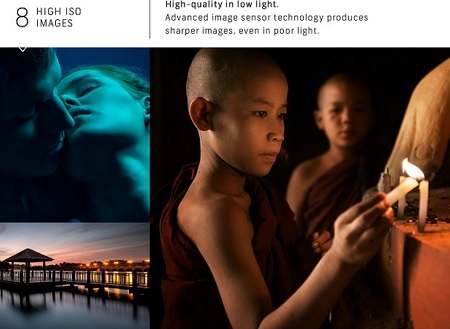Simple images which mirror target demographics are key to capturing attention According to new eye tracking research looking at the effectiveness of online ads.

Marketers selecting the correct images can double the amount of time their online ads are viewed on desktop, according to a study revealed today by Shutterstock, the leading global provider of imagery and music. Shutterstock commissioned Lumen, the eye-tracking specialists, to identify the types of images that had the highest engagement factor and dwell times. It found that simple image-led online ads which mirror the demographic profile of those they are targeting perform the best when measuring viewability and dwell time. The top performing ad was viewed for 1.4 seconds, compared to a benchmark dwell time of 0.7 seconds.
Highlights from the study include:
• Males (on average) are more responsive to online ads than females
o Males viewed or noticed almost a third (31%) of all the ads in the study whereas females viewed or noticed just a quarter
o Males looked at the ads for 0.4 seconds longer than females (males 0.9s vs females 0.5s)
• Image-led ads featuring children are more engaging to parents
o Those with children viewed 25% of these ads for an average of 1.3 seconds
o Those without children viewed 22% of these ads for an average of 0.8 seconds
• Image-led ads featuring images of an elderly couple were viewed more by those aged 55+
o Half of those aged 55+ viewed the ads
o A third of those aged 18-34 viewed the ads
o 38% of those aged 35-54 viewed the ads
The study was conducted in two phases. in the first phase, 150 panellists were shown 65 images (taken from Shutterstock’s expansive library) in a randomised order to decipher which were the most engaging. In the second phase, the top, middle and bottom performing images from the first study were used to create 16 image-led ads. These ads were then shown to a panel of 148 individuals, within a typical online browsing environment. Throughout the entire study, panellists’ eye movements were tracked to measure engagement.
From the first phase, more complex images designed to illicit emotions such as anger and confusion had the highest engagement factor, whereas images evoking surprise and happiness had the lowest. However, out of the images which had the highest engagement factor when shown in a non-ad environment, only 40% of them were viewed longer than the 0.7 seconds benchmark, when shown in a typical online browsing environment. The top performing images from the second phase were typically bolder and simpler in composition.
Jeff Weiser, Chief Marketing Officer, Shutterstock, commented: “With this research we wanted to get to the heart of what makes an engaging ad online. It’s notoriously hard to prove the effectiveness of online ads but this study goes a long way to showcasing what type of images engage viewers and therefore what kinds of ads are most effective. For marketers looking to produce online ad campaigns, they should seek to use simple imagery that appeals to the target demographic.”
Mike Follett, Managing Director, Lumen, said: “With our eye-tracking technology we’re able to see first-hand what consumers are looking at and why they’re looking at it. This puts a lot of power in the hands of art directors and visual creatives as it enables them to make informed decisions regarding the imagery that they choose.”
Overall, when viewing images, the eye-tracking technology revealed:
• Faces grab attention quickly: they are often the first thing that people look at
• Busy images can split attention: not everyone is attracted to the same part of the image straight away
• When the image does not have a key focal point, attention begins in the middle, before spreading to the rest of the image
https://www.shutterstock.com/
